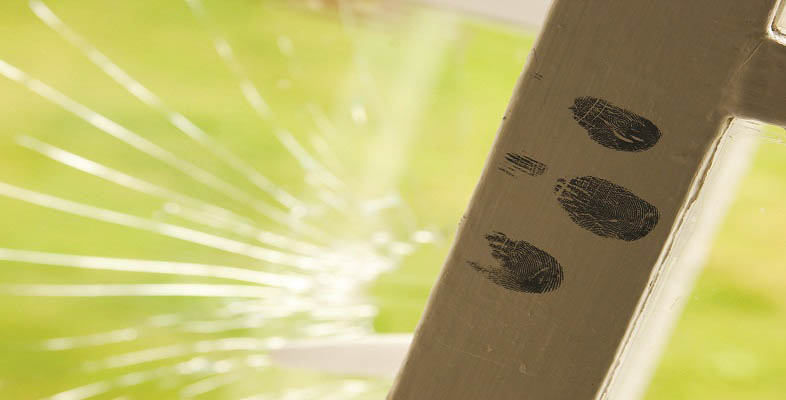Home » Course Layouts » Free Course Layout Udemy
Explore how your own mind works, and discover how the limitations of the human brain can lead to major miscarriages of justice.
0
61
English
English [CC]
- Learn basic syntax that can apply to any language.
- Learn what is a programming language and the basic concepts for beginners.
- Understand what is Javascript in it's truest form.
- Know the basic syntax of Javascript.
- Know some hidden quirks in Javascript.
Description
Despite advances in forensic science, eyewitness testimony remains a critical component of criminal investigations. Psychological research has revealed the dangers of relying on evidence gained from an eyewitness and also how careful the police need to be when questioning witnesses.
Using videos of real witnesses and from cameras that go behind the scenes of a police investigation, this course explores the psychology of eyewitness testimony. You will get the chance to test your own cognitive skills and to see whether your powers of investigation are as good as a crack squad of police officers, as you try to solve a crime using nothing but evidence from eyewitnesses.
This course is intended for those with an interest in psychology and/or criminal investigation, and does not require any previous experience of studying either subject.
If you found this course interesting and want to test yourself further, why not take a look at the Open University's BSc in Forensic psychology?
Enrolling on the course will give you the opportunity to earn an Open University digital badge. Badges are not accredited by The Open University but they're a great way to demonstrate your interest in the subject and commitment to your career, and to provide evidence of continuing professional development.
Once you are signed in, you can manage your digital badges online from My OpenLearn. In addition, you can download and print your OpenLearn statement of participation - which also displays your Open University badge.
The Open University would really appreciate a few minutes of your time to tell us about yourself and your expectations for the course before you begin, in our optional start-of-course survey . Once you complete the course we would also value your feedback and suggestions for future improvement, in our optional end-of-course survey . Participation will be completely confidential and we will not pass on your details to others.

This course is endorsed by the CPD Standards Office . It can be used to provide evidence of continuing professional development but is not accredited learning. We are unable to provide formal learner verification services for participation in our open online courses, which are provided freely by The Open University as self-directed CPD.
Anyone wishing to provide evidence of their enrolment on this course is able to do so by sharing their Activity Record on their OpenLearn Profile, which is available before completion of the course and earning of the Statement of Participation.
Earn this free Open University digital badge if you complete this course! The badge can be displayed, shared and downloaded as a marker of your achievement. The badge is awarded for completing the course and passing the quizzes.
Course learning outcomes
After studying this course, you should be able to:
- Understand the psychology of eyewitness testimony
- Develop skills in investigation
- Explore human cognition and discover the mistakes brains can make
- Discuss concepts of criminal investigation
- Consider the relationship between limitations of the human brain and miscarriages of justice.
Course content
-
- Introduction 00:15:00
-
- Mistaken identification 00:15:00
- Knowing your own mind 00:10:00
- What you think you know about your memory 00:10:00
- Introduction to eyewitness psychology 00:15:00
- Causes of miscarriages of justice 00:10:00
- Miscarriages of justice 00:15:00
- The size of the problem – the Innocence Project 00:15:00
- Variables affecting reliability of testimony 00:15:00
- A witness misidentifies her attacker 00:15:00
- Introduction 00:15:00
- DI Bullet takes witness statements 00:15:00
- Evaluating the statements 00:20:00
- Re-evaluating the statements 00:15:00
- Summary of the evidence 00:15:00
- Introduction 00:20:00
- Explanation of change blindness 00:15:00
- Flicker paradigm 00:15:00
- Implications of attentional problems for witnesses 00:15:00
- The influence of stress and arousal 00:15:00
- Factors in change blindness 00:15:00
- Introduction 00:15:00
- Psychology of interviewing 00:10:00
- Context reinstatement 00:15:00
- The cognitive interview 00:15:00
- The cognitive interview in practice 00:15:00
- Introduction 00:15:00
- Recognising a face 00:20:00
- The face, the whole face and nothing but the face 00:10:00
- Famous E-FIT task 00:15:00
- Recall and recognition 00:10:00
- Comparing E-FIT and EFIT-V 00:20:00
- Introduction 00:15:00
- Identification skills test 00:10:00
- Crime 1 00:10:00
- Parade 1 00:10:00
- Crime 2 00:10:00
- Parade 2 00:10:00
- Crime 3 00:10:00
- Parade 3 00:10:00
- Crime 4 00:10:00
- Parade 4 00:10:00
- Identification skills test: answers 00:15:00
- DS Sund’s investigation so far 00:10:00
- Video identification parades 00:15:00
- DS Sund shows the ID parades to Lila 00:15:00
- DS Sund shows the ID parades to Seth 00:15:00
- What were the problems with the line-ups? 00:15:00
- DS Sund’s outcome 00:10:00
- Summary of Week 6 00:10:00
- DI Bullet solves the crime 00:15:00
- The case for the prosecution 00:10:00
- The case for the defence 00:10:00
- Summing up DI Bullet’s case 00:10:00
- What do you think happened? 00:15:00
- Watching the crime 00:10:00
- How well did the police do? 00:15:00
- Summary of Week 7 00:10:00
- New research 00:10:00
- Mystery man 00:10:00
- Reading minds and behaviour 00:10:00
- Eyewitness survey 00:10:00
- Research around the world 00:10:00
- Issues of realism and ethics in witness research 00:20:00
N.A
- 5 stars0
- 4 stars0
- 3 stars0
- 2 stars0
- 1 stars0
No Reviews found for this course.












